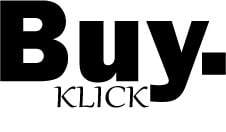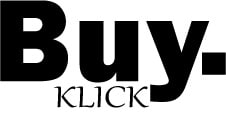Introduction
Hi there! Ready to explore the fascinating field of web development? In the modern digital world, knowing web development is essential, regardless of whether you want to start your first website or pursue a new job. However, where do you even start? We’ll walk you through everything step-by-step in this article so you may feel comfortable starting your web development journey.
Understanding the Basics
What You Need to Know
First things first, let’s confirm that we are in agreement. The process of creating and managing websites is called web development. It includes a number of things, including as database management, programming, and web design. If you’re wondering why this is significant, consider this: in today’s tech-driven world, almost every industry needs a strong internet presence.
Key Terminology in Web Development
Prior to getting too technical, it’s useful to understand a few key terminology. This involves being aware of the distinctions between the back-end, or server-side, and front-end, or visually interactive, components of a website. Along the way, familiarity with ideas like hosting, domains, and UX/UI design will be helpful.
Front-End Development
Overview of Front-End Development
Everything a user does on a website that requires interaction is handled by front-end development. It all comes down to designing user-friendly and captivating interfaces. Consider it the public face of your website; it must be well-designed and functional.
Essential Languages for Front-End
HTML
First, let’s talk about HTML (HyperText Markup Language). It serves as the foundation of any website, enabling you to organize material using components like headings, paragraphs, and links. Acquiring proficiency in HTML is akin to grasping the web’s fundamental and crucial grammar.
CSS
The next topic is Cascading Style Sheets, or CSS. HTML is all about structure, but CSS is all about style. It enables you to alter fonts, colors, and layouts to produce aesthetically pleasing designs. Consider CSS to be your website’s artistic expression—it adds beauty to everything!
JavaScript
The last programming language is JavaScript, which adds dynamic elements to the system. It reacts to user input, allowing for real-time updates without requiring a page reload. JavaScript gives your website movement and muscle if HTML and CSS are its skin and bones.
Front-End Frameworks
With the aid of frameworks like React, Angular, and Vue.js, you can create sophisticated online apps more quickly and effectively. They have built-in features and offer an organized method for arranging your code. Thus, it’s a wise decision to become familiar with at least one of these frameworks if front-end development is your thing.
Back-End Development
Overview of Back-End Development
After discussing front-end development, let’s move on to the back-end development process. The server, databases, and application logic are used in this situation. It’s what keeps everything running properly that matters, not what users see.
Essential Languages for Back-End
PHP
PHP is a widely used open-source scripting language, especially in the field of web development. It powers websites like Facebook and WordPress and is present everywhere. Mastering PHP is akin to obtaining the keys to numerous virtual realms.
Python
Python’s simplicity and versatility are making it more and more popular in the web development space. You can create robust web apps rapidly with frameworks like Django.
Ruby
Web development is simplified when Ruby and Ruby on Rails are used together. It is a favorite among startups because of its speed and beautiful syntax.
Back-End Frameworks
Complex structures are provided by frameworks like Django, Ruby on Rails, and Node.js to facilitate back-end development. Make sure to investigate these frameworks as they can help you save time and effort!
Databases
Understanding Databases
Databases are essential for providing the data storage that every web application requires. Databases organize everything, including product information, passwords, and usernames.
Types of Databases
When it comes down to it, you can choose between SQL (Structured Query Language) and NoSQL databases. SQL databases are relational, meaning they store data in structured tables, while NoSQL databases are more flexible and can handle unstructured data.
Popular Database Management Systems
In the end, you have the option to select between NoSQL and SQL (Structured Query Language) databases. NoSQL databases are more adaptable and can handle unstructured data, although relational SQL databases store data in structured tables.
Version Control Systems
Version Control: What Is It?
A technique called version control keeps track of the modifications you make to your code over time. You can work together without stomping on each other’s toes and go back to earlier iterations.
The Value of Git
The most widely used version control system available is called Git. It is necessary for both individual and group projects. Really, being familiar with Git is essential if you want to be regarded seriously as a developer.
How GitHub and Git Are Used
Git is surprisingly simple to start using. To manage your projects, become familiar with commands such as git init, git commit, and git push. For hosting your repositories and interacting with other developers, check out GitHub.
Responsive Design
What is Responsive Design?
Regardless of the platform, responsive design makes sure your website looks fantastic on large desktop monitors and little smartphone screens. Your website shouldn’t be viewed in a small format, just as you wouldn’t sell pizza without its toppings!
Importance in Web Development
Nowadays, more people use smart phones than desktops to browse the internet. It’s like ignoring half of your potential audience if you ignore responsive design. Make sure you can adapt!
Tools for Responsive Design
Learn how to use tools like Figma and frameworks like Bootstrap to simplify responsive design. They can simplify your life and save you time.
Web Development Tools
Crucial Resources for Developers
Having the appropriate tools may make a big difference in web development. We’ll go over the necessities that you can’t live without.
Editors for text and IDEs
Writing and editing code is made simple with an IDE (Integrated Development Environment) or text editor. Sublime Text, Atom, and Visual Studio Code are popular options.
Tools for Browser Developers
Developer tools are included with every modern browser. Utilize them for performance analysis, debugging JavaScript, and element inspection. Your best buddies are them!
Learning Resources
Online Programs
Both paid and free information abounds throughout the internet. To get you started, check out the amazing courses available on websites like Udemy, Codecademy, and freeCodeCamp.
Instructional Materials and Records
Keep a mind to bookmark the official language and framework documents. Just by looking at the samples they offer, you can pick up a lot of knowledge.
Web developer books
Choose books with titles like “Eloquent JavaScript” or “You Don’t Know JS” if you’re a bookworm. They provide in-depth explorations of particular languages and ideas.
Building Projects
Importance of Hands-On Projects
While theory is valuable, nothing compares to real-world experience. Take on challenging projects to help you embrace the learning curve.
Kinds of Projects to Think About
Start small to display your work, perhaps with a personal webpage. Try developing increasingly intricate programs as you go, such as a task management or a blogging site.
Networking and Community Engagement
Joining Web Development Communities
Your educational career can be greatly aided by community. You can meet seasoned coders through websites such as Stack Overflow, Reddit, or neighborhood meetup groups.
Importance of Networking
Never undervalue networking! Making contacts can lead to collaborations and employment prospects. It’s also a fantastic opportunity to gain knowledge from the experiences of others.
Staying Updated
The Importance of Keeping Up with Trends
The field of web development is fast changing. Success depends on keeping up with the newest frameworks and technology.
Resources for Staying Informed
You may stay informed about web development through blogs, podcasts, and Twitter feeds. Follow business titans and participate in pertinent conversations.
Conclusion
There you have it, then! When starting out in web development, there is a lot to learn, but keep in mind that everyone started out as a beginner. Take things one step at a time, and don’t be afraid to ask for help from the community. Why wait when you can have an artistically rich and fulfilling journey into web development? Take the time to learn now!
FAQs
Which programming language is ideal for those just starting out in web development?
The ideal languages to start with are HTML, CSS, and JavaScript because they cover the most important parts of front-end development.
How much time does learning web programming typically take?
It varies, but you might learn the fundamentals in three to six months if you practice and study consistently.
Should I learn front-end development in order to concentrate on front-end development?
Gaining a grasp of back-end principles can help you become more proficient with front-end development, however it’s not a need.
Which web development frameworks are the best?
React, Angular, and Vue.js are popular front-end frameworks; Node.js, Django, and Ruby on Rails are excellent back-end framework options.
Can I learn how to design websites on my own?
Of course! A lot of proficient developers are self-taught. You can study web development independently if you put in the necessary effort and have access to the correct tools.





